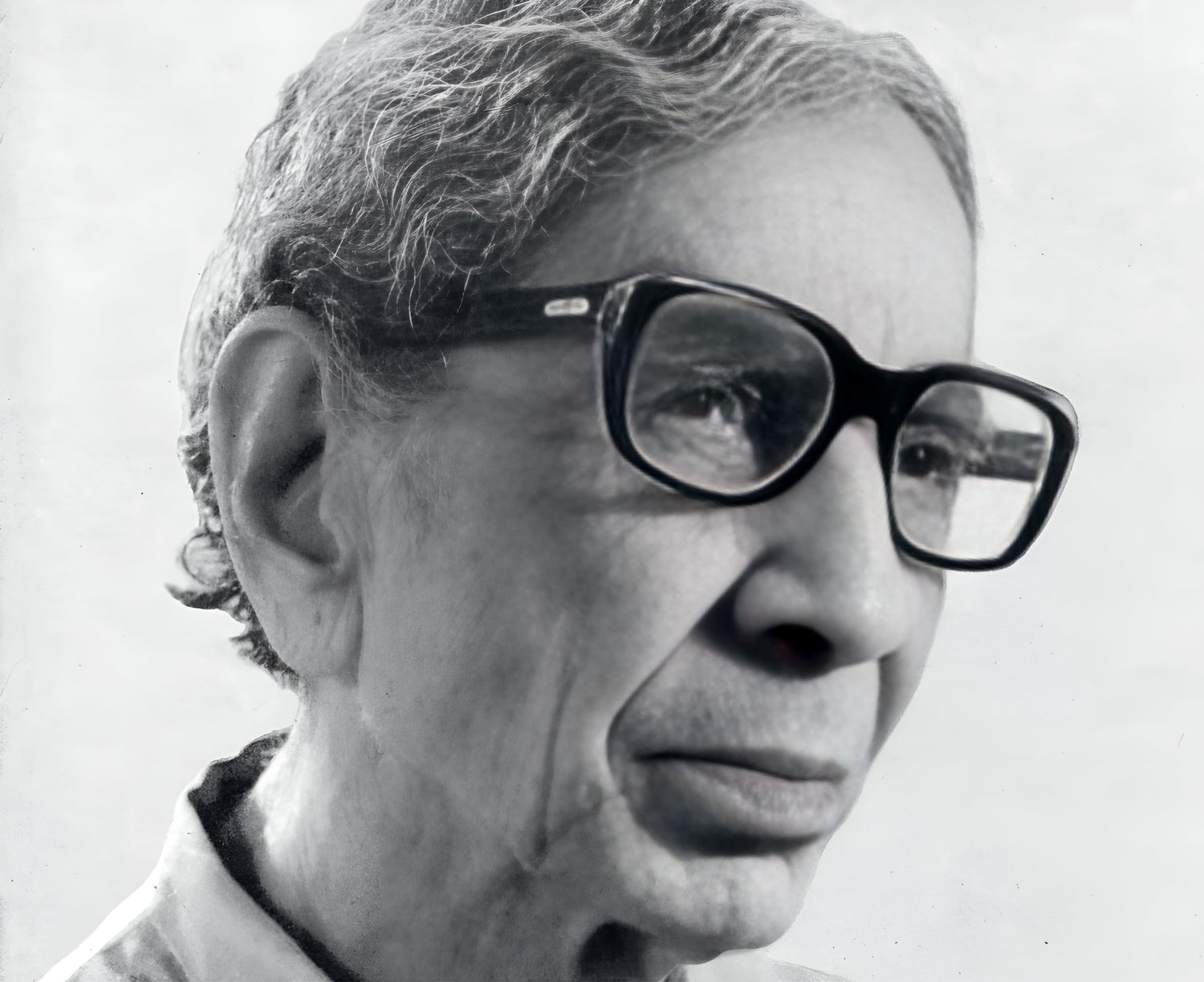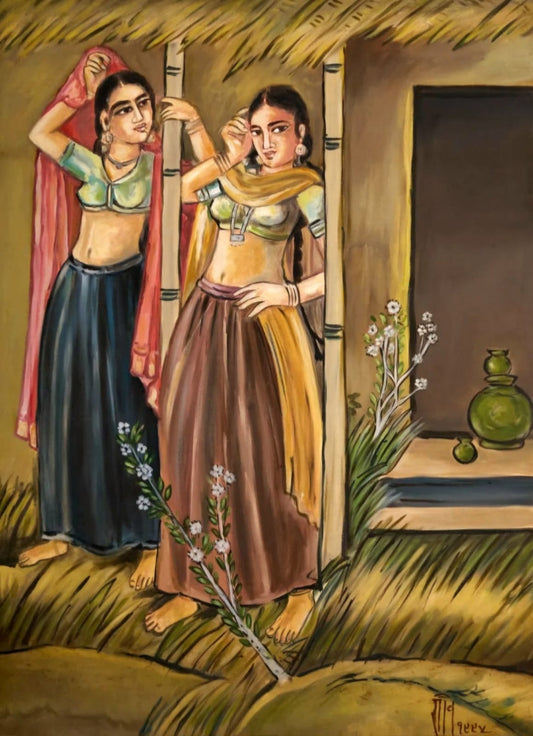
RAM GOPAL VIJAYVARGIYA
Ramgopal Vijayvargiya’s art unfolds with a lyrical grace rooted in both classical tradition and a modernist sensibility. Born in 1905 in Baler, Rajasthan, his early encounter with a wandering ascetic introduced him to the fundamentals of drawing, setting in motion a lifelong devotion to visual storytelling. Supported by his father’s encouragement, Vijayvargiya refined his skills at the Maharaja School of Arts and Crafts, where he studied under Shailendranath De, a leading figure of the Bengal revivalist movement.
By the age of 17, Vijayvargiya had already made a striking impression with a solo exhibition at the Fine Arts and Crafts Society in Kolkata. His extraordinary ability earned him a direct promotion to the final year of his five-year course, which he completed in a remarkable eight months. After a brief stint teaching, he committed himself fully to his artistic practice, quickly gaining recognition across India.
Vijayvargiya’s work reveals a deep dialogue with India’s literary heritage, drawing inspiration from classical poets such as Kalidas and Omar Khayyam. This literary influence permeates his oeuvre, which spans several thousand works. His mastery in translating poetic themes into visual form is exemplified by his celebrated series on the Geet Govind, a work that attracted international attention when it was acquired by Tsutomu Ueda’s gallery in Tokyo. This collection remains a testament to his ability to merge narrative depth with exquisite technical control. In addition to painting, Vijayvargiya’s creative spirit found expression in poetry, short stories, and art criticism. He authored three poetry anthologies, a collection of short stories, and six books on art, underscoring a lifelong engagement with the theoretical and literary dimensions of creativity. His style balances a reverence for classical aesthetics with a sensitivity to evolving contemporary concerns, bridging past and present with nuanced understanding. Ramgopal Vijayvargiya’s legacy endures through his poetic vision and technical mastery, positioning him as a pivotal figure in 20th-century Indian art. His contribution enriches the cultural fabric with works that continue to inspire both artists and admirers, affirming his place among India’s artistic luminaries.

